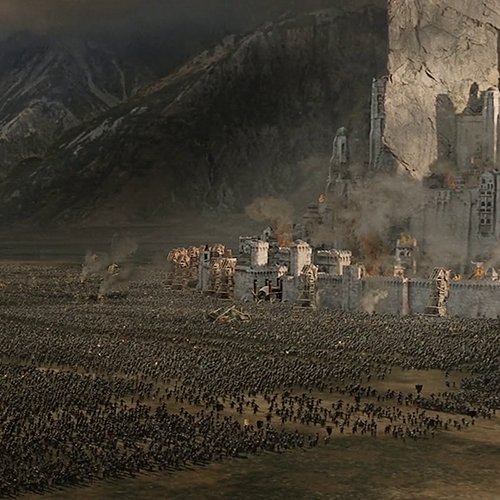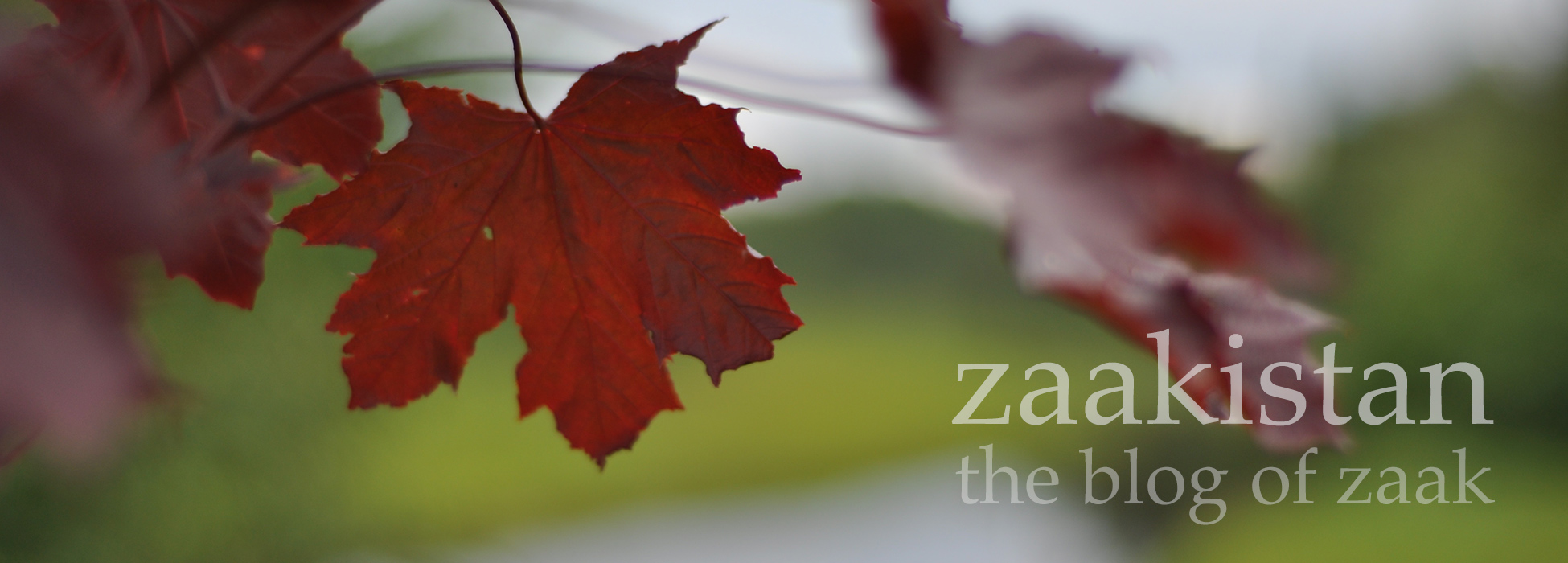
Concept art from the film adaptation of The Lord of the Rings: The Return of the King
Fear. I can smell it.
Fear of a destroyed economy thanks to wing nuts who have elected fiscally irresponsible governments at both the provincial and federal levels and tanking oil prices. Fear of sharia law thanks to the flung open gates to Muslim refugees. Fear of global warming storms and weather conditions. Fear of regulations and taxes imposed because of the global warming lobby. Fear of child abductors. Fear of low marks on exams. Fear of sexual predators using new bathroom legislation to prey on children while they pee. Fear of the helium shortage. Fear of the virus killing the conventional banana for good. Fear of rising insurance prices. Fear of people on bath salts. Fear of cancer, heart disease, Alzheimers, impotence, diabetes. Fear of cell phones. Fear of vaccinations. Fear of government conspiracies. Fear of demons.
One of the great scenes of fear is from the Battle of Pelennor Fields in The Lord of the Rings: The Return of the King. Hordes of orcs have besieged the city of Minas Tirith.
Soon there was great peril of fire behind the wall, and all who could be spared were busy quelling the flames that sprang up in many places. Then among the greater casts there fell another hail, less ruinous but more horrible. All about the streets and lanes behind the Gate it tumbled down, small round shot that did not burn. But when men ran to learn what it might be, they cried aloud or wept. For the enemy was flinging into the City all the heads of those who had fallen fighting at Osgiliath, or on the Rammas, or in the fields. They were grim to look on; for though some were crushed and shapeless, and some had been cruelly hewn, yet many had features that could be told, and it seemed that they had died in pain; and all were branded with the foul token of the Lidless Eye. But marred and dishonoured as they were, it often chanced that thus a man would see again the face of someone that he had known, who had walked proudly once in arms, or tilled the fields, or ridden in upon a holiday from the green vales in the hills. [chapter 4, book V, The Lord of the Rings by J.R.R. Tolkien]
Add to this horrible effect of the volley is the shrieks of the circling nazgûl compounding the enemy’s greatest of weapons: “dread and despair.”
So what should our response be to what are presented as horrors. It is difficult to imagine a more horrific episode than that describe in the quoted passage: being besieged by a massive foe, having the severed heads of once friends and neighbours landing all around you and great and terrible fell beasts reminding you of your imminent demise with shrieks while circling at a high altitude.
The truth is that there was a way forward for the citizens of Minas Tirith. There wasn’t if they gave up. There wasn’t if they focused on the dread and despair. There wasn’t if they only listened to the nazgûl.
The truth is that there is a way forward for us. While there are in fact parts of the world and moments in history where the horrors do resemble those in the siege of Minas Tirith, the challenges we face, real or imagined, are not comparable in the least. But they do come at us like that volley of severed heads, incessant and terrorizing.
Where we focus is what is important. Do we allow fear to be the message we read each day? Do we allow dread to be the thread we weave the fabric of our days with? Will we act out of cowering fear when we make democratic decisions and interact with our neighbours, lashing out or reacting with a given line from the media?
What is the alternative? In the Lord of the Rings, the citizens of the city rally to Gandalf who encourages them on and calls them to defend the gate, even as Grond, a massive battering ram approaches.
What does it mean to defend the gate in our context? I propose that the gate is what holds fear, dread and despair at bay. Society can not function out of fear as it will regress, culture will suffer, marginalized groups will be further marginalized, and idealistic priorities are deferred to the immediate perceived emergency. Fear is the enemy of hope, faith and love. Bread loses its taste when we are filled with dread.
But what about the threat? What if I truly fear that my child will be damaged somehow by a vaccine? What if our planet is threatened by climate change directly caused by human use of fossil fuels? What if immigrants are here to kill us? We would be fools to ignore the threat!
Our approach to the perceived threat is paramount. There is too much wisdom that we can not ignore when approaching issues. Seek voices of reason. Speak truth in love. Consider motives of those saying that the sky is falling. Allow for voices on both sides of an argument to speak to you and evaluate their scientific rigour, motive, and consensus. Don’t assume that anything posted on the internet has been vetted by experts.
Do all of this with grace, something I have particular difficulty with.
Be the voice calling others to hope, faith, and love.
